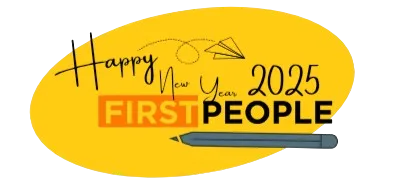The Oxford Word of the Year is an annual reflection of society’s cultural shifts, linguistic trends, and evolving priorities. In 2023 and 2024, the chosen words, “Goblin Mode” and “Brain Rot,” encapsulated significant aspects of modern life—each offering insights into how language mirrors societal behavior and digital dynamics. Let us explore these terms in depth, unraveling their origins, meanings, and cultural significance.
Goblin Mode (2023)
Definition:
Goblin Mode is a slang term that describes a state of unapologetic self-indulgence, laziness, and hedonism. It refers to behaviors that reject societal expectations in favor of comfort and convenience. In this mode, individuals prioritize their desires over societal norms, often embracing disorganization, messiness, or lethargy without guilt.
Origins and Evolution
The term “Goblin Mode” first surfaced on social media platforms in the early 2010s but gained widespread traction during the pandemic era. The term conjures an image of a mythical goblin—a mischievous creature that thrives in chaos—to metaphorically represent someone reveling in untamed, primal instincts.
The pandemic’s impact on daily life significantly contributed to the rise of “Goblin Mode.” As people adjusted to extended periods of isolation, remote work, and lockdowns, many abandoned traditional routines. Social media became a space where individuals celebrated their messy, imperfect selves, using “Goblin Mode” to humorously embrace habits such as lounging in pajamas all day, binge-watching shows, or eating unconventional meals.
Cultural Significance
The term resonated widely in 2023 as a counterpoint to the idealized, polished images often showcased on social media. It offered a sense of relief from the pressure to perform perfection. Influencers and everyday users alike shared their “Goblin Mode” moments, making it a rallying cry for authenticity in an overly curated digital world.
Key moments that fueled its popularity included viral memes, TikTok trends, and widespread media coverage. It was a linguistic rebellion against hustle culture, serving as a reminder that embracing flaws and imperfections is human.
Broader Implications
Goblin Mode’s emergence highlighted shifting societal attitudes toward self-care and mental health. It underscored a collective fatigue with overachievement and perfectionism, reflecting a desire for more realistic, attainable standards of living. The term also raised questions about how technology influences self-expression and identity formation in the digital age.
Brain Rot (2024)
Definition:
“Brain Rot” is a colloquial term used to describe the mental exhaustion, decreased focus, or intellectual stagnation caused by prolonged exposure to mindless entertainment or overwhelming digital content. It reflects the modern struggle with information overload, addictive media consumption, and the effects of online culture on cognitive health.
Origins and Evolution
The concept of “Brain Rot” predates its adoption as a popular term but gained prominence with the explosion of short-form content on platforms like TikTok, Instagram Reels, and YouTube Shorts. Users began describing the sensation of wasting hours scrolling through low-effort videos or repetitive content as “Brain Rot.”
The term captures a universal experience of the digital era—feeling drained after consuming an abundance of information or engaging in unproductive screen time. Initially used humorously, it has evolved into a term with serious implications about the impacts of technology on mental well-being.
Cultural Significance
By 2024, “Brain Rot” had become a common phrase among digital natives, reflecting a growing awareness of the downsides of hyper-connectivity. While the internet offers unparalleled access to knowledge and creativity, it also fosters environments where distraction and overconsumption thrive.
The popularity of “Brain Rot” coincided with increased public discourse about digital detoxes, the importance of mindfulness, and the need for boundaries in online engagement. Memes, comics, and commentary often illustrated the phenomenon, resonating with those grappling with digital fatigue.
Broader Implications
The term’s selection as Word of the Year emphasized concerns about the long-term effects of media consumption habits. Psychologists, educators, and technologists alike began addressing issues related to “Brain Rot,” advocating for healthier digital behaviors. Discussions included the need for:
- Media Literacy: Equipping individuals to critically evaluate the content they consume.
- Attention Management: Developing strategies to reclaim focus and productivity.
- Ethical Tech Design: Encouraging platforms to prioritize user well-being over engagement metrics.
Comparing the Words: A Reflection of the Times
While “Goblin Mode” and “Brain Rot” address distinct phenomena, both are products of the same cultural landscape—one dominated by rapid technological change and shifting societal values.
- Emotional Tone: Goblin Mode celebrates rebellion and self-acceptance, while Brain Rot serves as a cautionary term, urging introspection.
- Behavioral Focus: The former emphasizes individual habits and choices, while the latter highlights systemic challenges in the digital environment.
- Impact: Both terms provoke conversations about balance, whether it’s between work and leisure (Goblin Mode) or stimulation and rest (Brain Rot).
Conclusion
The Oxford Words of the Year for 2023 and 2024 encapsulate the complexities of modern life. “Goblin Mode” invites us to embrace imperfection and prioritize authenticity, while “Brain Rot” challenges us to reconsider our relationship with digital media. Together, they reflect the triumphs and tribulations of navigating a fast-paced, interconnected world. As these terms enter the cultural lexicon, they remind us that language is not just a tool for communication but also a mirror to our collective experiences and aspirations.












